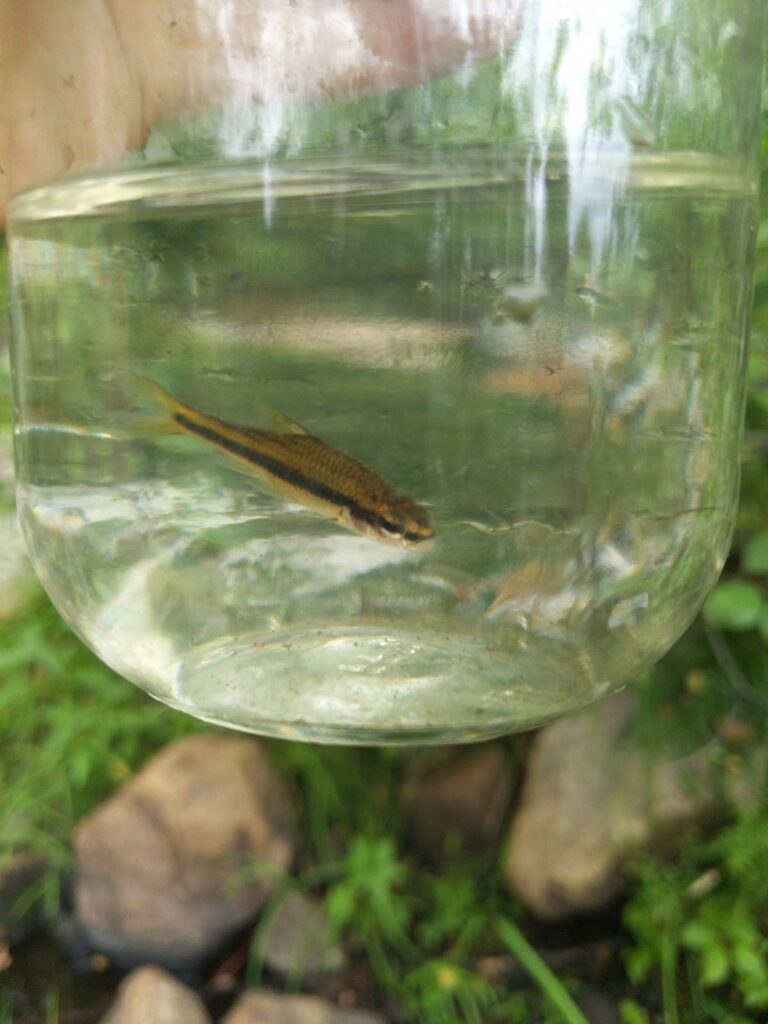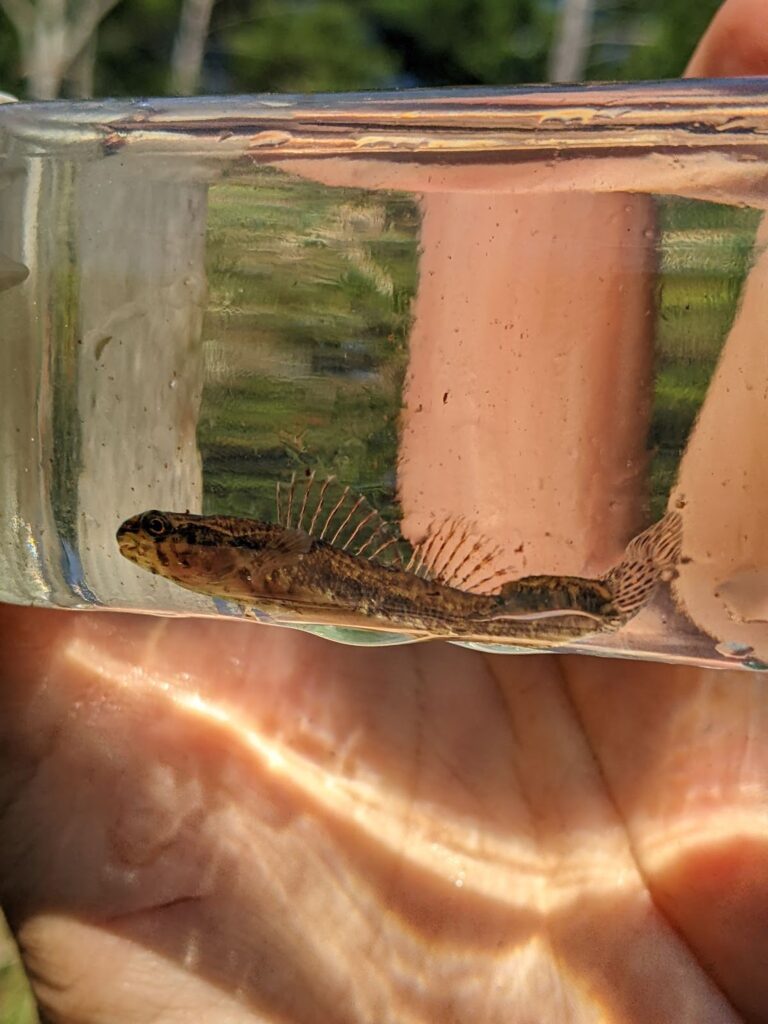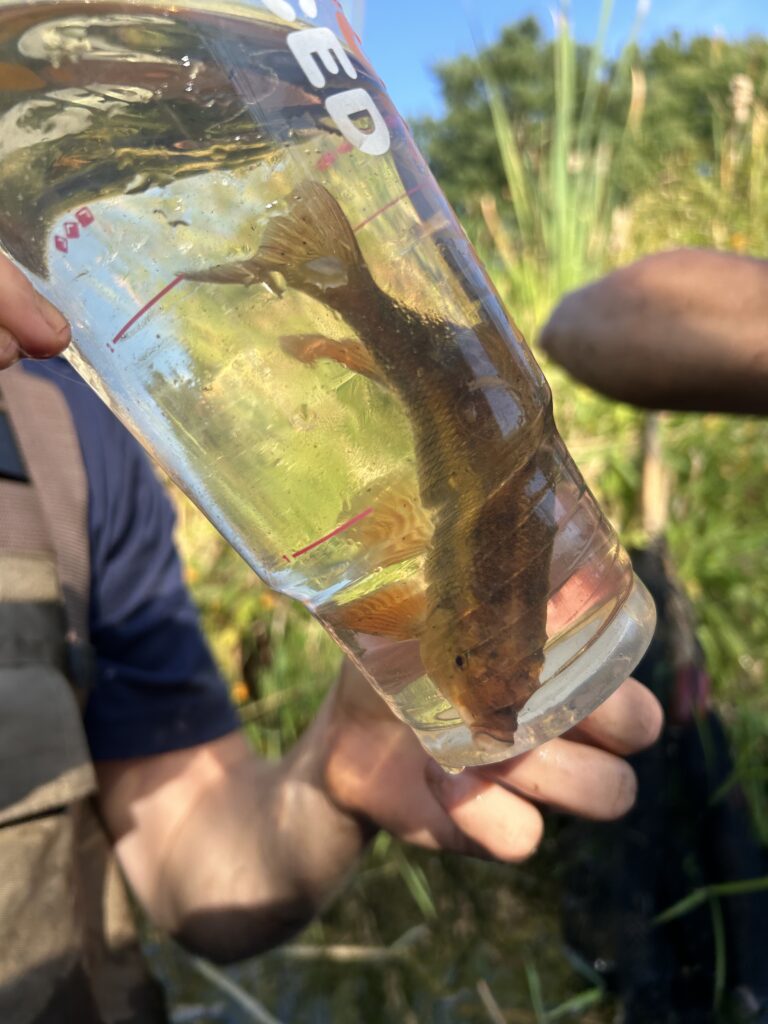Each year in late summer and early fall several of our field staff conduct surveys for bridle shiners. This is a small shiner species that is threatened and declining throughout much of its range and is listed as a species of special concern in Massachusetts. The Field Conservation Department has been coordinating search efforts with state biologists to help survey historical sites with previously recorded populations as well as at new sites where surveys have never been done or have not been re-surveyed for a long time. This species prefers clear, slow moving or stagnant water where they will often form schools, and are usually found near aquatic vegetation that provides cover and areas for them to breed. You can read more about them at https://www.mass.gov/nhesp by searching bridle shiner on the website.

Creek chubsucker (left) and bridle shiner from 2022 survey (right). As juveniles creek chubsucker looks extremely similar to bridle shiners but can be differentiated by the location and orientation of their mouths with point more downwards in chubsuckers

Surveys are conducted in teams using a seine net and also dipnets to capture fish which can then be identified. This year we conducted surveys in Vine Brook, which is a historic location for bridle shiners, and also surveyed new sites including sections of Heath Brook and Strong Water Brook. These brooks are part of the Shawsheen River watershed, one of the more isolated regional populations in Northeastern MA for the species. We had successful surveys in all of the sites but unfortunately did not document any bridle shiners at any of the sites this year. As recently as 2022 we recorded several bridle shiners at Vine Brook but historically the population there was far more abundant. We documented five species in Vine Brook, four in Heath Brook and eight species in Strong Water Brook, which had a surprisingly high diversity of mostly native fish species. We want to give a huge shoutout to our awesome zoo staff members that joined us for these surveys for wild work, Sidney and Dani, which gave us a crucial extra person to survey in teams of three and made it a better experience with their positive, excited energy.
Some of the highlights of our surveys included a swamp darter, several creek chubsuckers, yellow bullhead juveniles, and many golden shiners, a related species with high abundances at several sites.


Bridle shiners face a myriad of threats both from natural and human-caused alterations to habitat. Due to the species’ use of sight to hunt, changes in water turbidity impacts their ability to feed. Human threats including wetland alterations, introduction of invasive species, habitat fragmentation and pollution have all played a role in reducing population size and resiliency. Changes in water flow can also disrupt their populations and we have observed this in a site with a historically high population density that dropped off significantly after beavers impounded a section of the brook where the species had been abundant. These natural threats can have impacts on specific populations, but in combination with the larger threats humans have imposed, the species has been extirpated or dwindled in abundance from several localities.

We plan to continue surveying these and other sites within the Shawsheen watershed in future years to monitor bridle shiners and other fish diversity within these wetlands. In the future we also hope to conduct more surveys in areas of the Nissitissit River Watershed which stretches from Southern New Hampshire into Northern Massachusetts. This is another important regional watershed with historic records for both states and we have also been coordinating with NH state biologists to determine what surveys over the border are the highest priority. So stay tuned for updates on our future survey findings in the years to come!
